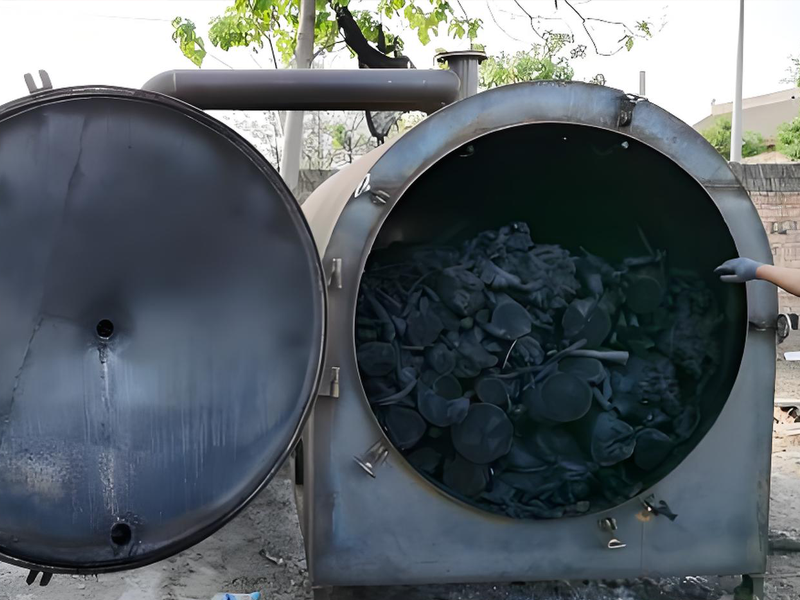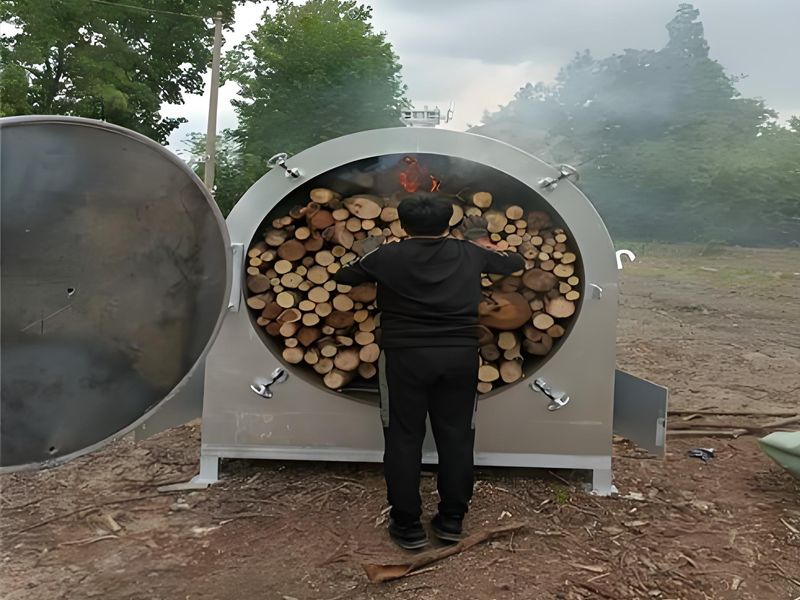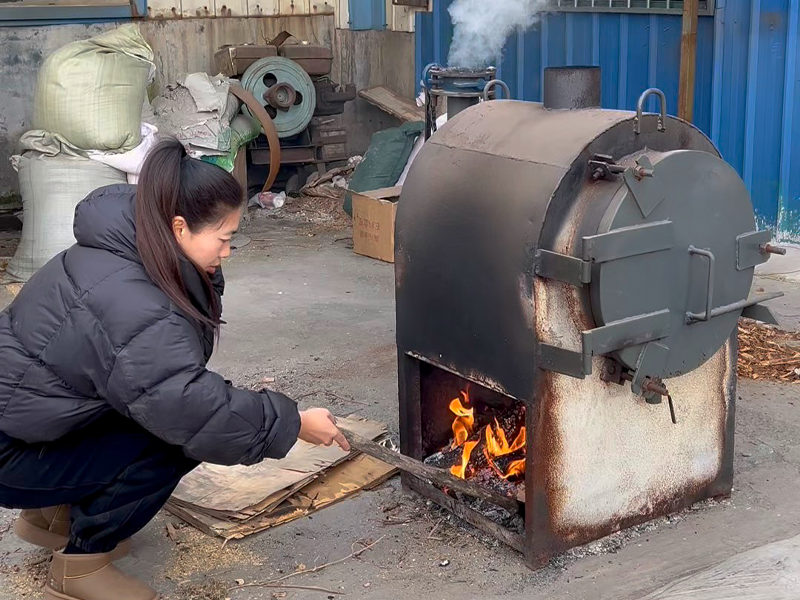Carbonization process of carbonization furnace
News 2022-06-14
Brief Overview of Wood Carbonization Process
Wood carbonization is a thermal decomposition process that converts wood into carbon-rich materials (e.g., charcoal, biochar) under high temperatures in an oxygen-limited environment. Here’s a simplified breakdown:
Pre-Treatment
Wood (logs, chips, or waste) is dried to reduce moisture content below 20%, ensuring efficient pyrolysis and minimizing smoke.
Pyrolysis
The wood is heated in a sealed furnace to 300–800°C (depending on desired products), with restricted oxygen to prevent combustion. Key stages include:
Dehydration (100–200°C): Moisture evaporates, and wood structure begins to degrade.
Thermal Decomposition (200–500°C): Cellulose, hemicellulose, and lignin break down, releasing volatile gases (CO, CH₄).
Carbonization (>500°C): Remaining material undergoes dehydrogenation and deoxygenation, forming a stable porous carbon structure.
Product Collection
Solid Output: Cooled charcoal or biochar (70–90% carbon content), used as fuel, soil amendment, or industrial feedstock.
Liquid Byproduct: Condensed volatiles yield wood vinegar, applied in agriculture or chemicals.
Syngas: Flammable gases (e.g., H₂) are recycled to fuel the furnace or generate electricity.
Environmental Benefits
Carbon Sequestration: Biochar stored in soil locks carbon for centuries, mitigating climate change.
Waste Valorization: Converts forestry residues into valuable products, reducing landfill dependency.
This controlled, energy-efficient process minimizes emissions and maximizes resource recovery, making it pivotal for sustainable energy, agriculture, and waste management.


